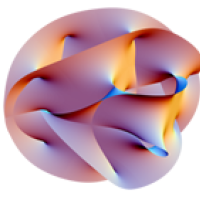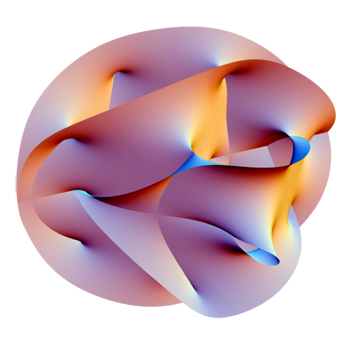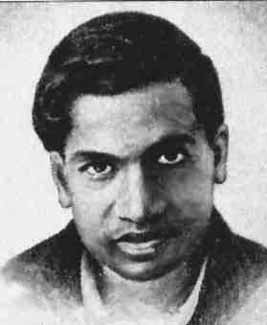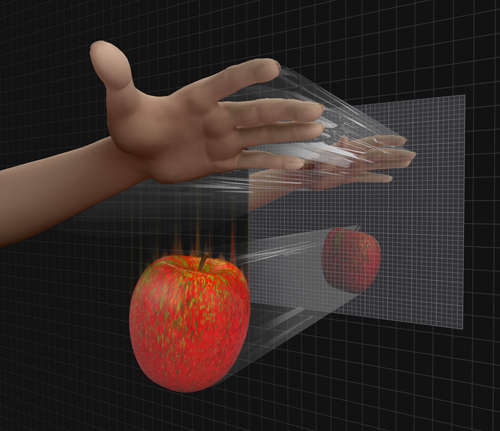
String theory: Convincing mathematics
We saw in the last article that string theory was developed by physicists to unify the physics of the very large – cosmology and gravity – with the physics of the very small – fundamental particles and quantum physics. But while physicists were waiting for experimental proof of the physical predictions of string theory, the rich mathematics of string theory convinced mathematicians that this was the right research direction to follow.
Counting problems in geometry
String theory not only gave mathematicians interesting problems to work on, it also solved problems that arose in pure mathematics. One example is from an area of geometry known as enumerative geometry, that started with work by the ancient Greek mathematician Apollonius. This was such an important type of problem that the mathematician David Hilbert included finding a rigorous and general method for solving such problems in his famous list of 23 important unsolved problems in 1900.
You may remember from school that if you have two points on a piece of paper, then only one line will pass through both points. And if you have three points then only one circle will pass through all three. But you can ask more complicated questions, such as if you draw one circle and two points, how many circles can you draw through these two points that touch the first circle?
"These kinds of enumerative problems were studied all the way through the 19th century," says Yang-Hui He from the London Institute of Mathematical Sciences. "Hilbert even asked as one of his foundational problems - does there exist a general method to solve this kind of enumerative problem? This is a pure problem in geometry."
A cross-section of a Calabi-Yau manifold. Image: Lunch, CC BY-SA 2.5.
Progress on a general method to solve these enumerative geometry problems was stalled until the 1990s, when physicist Philip Candelas and collaborators were busy studying something called Calabi-Yau manifolds. These are geometric structures that provide a way to hide the extra dimensions that arise in string theory (you can read more in the last article). Candelas and his colleagues realised they could solve enumerative geometry problems for a huge class of these Calabi-Yau manifolds by using tools from string theory. "When this came out the mathematicians were completely blown away," says He. "These physicists had [managed] something that the mathematicians couldn't even dream of solving."
The link between string theory and mathematics had now gone full circle. It wasn't just that mathematics provided string theory with the fantastic structures, such as the Calabi-Yau manifolds, that it needed. String theory could reciprocate by providing the tools needed to solve problems in mathematics. "I think there has been nothing like that in any of the other contenders for the cutting edge theories of physics," says He. Other theories (such as loop quantum gravity and spin foam) have not solved fundamental maths problems. "They use lots of fancy maths – any physics theory will ultimately use lots of fancy maths – but something very different about this idea of string theory is that it is constantly solving these crazy problems!"
Counting problems in number theory
One of the ideas from physics that Candelas and his colleagues used in their work on enumerative geometry problems was partition functions. "A partition function is very simple," says He. "A partition function is just an organising tool."
Originally partition functions arose in mathematics, in the area of number theory. You can write any natural number as a sum of natural numbers. For example 3 can be written as a sum in three different ways:
3=3 3=2+1 3=1+1+1
The number 4 can be written as a sum in five different ways:
4=4 4=3+1 4=2+2 4=2+1+1 4=1+1+1+1
The partition number P(n) of a number n is precisely the number of ways it can be written as a sum of natural numbers (without worrying about the order in which they are added). As we have just seen, P(3)=3 and P(4)=5.

Srinivasa Ramanujan was a self-taught mathematical genius whose impact on mathematics was huge.
Writing down and counting the number of ways you can write a number as a sum seems easy, but in fact it quickly gets out of hand as the number gets large. For example for the number 10, the partition number P(10) is 42, which is already surprisingly large. A partition function is a way of calculating the partition number as a function of n without explicitly writing out all the different ways of writing n as a sum. The brilliant self-taught mathematician Srinivasa Ramanujan was elected a fellow of the Royal Society in 1918 for his work with G.H. Hardy on such a partition function.
In physics, partition functions arise when you study physical systems, say a room filled with gas at a certain temperature. Partition functions here provide a way to measure the entropy – the amount of order, or equivalently disorder – in such a system. Again this amounts to a counting problem, this time counting how many different possible arrangements of the molecules of gas in the room result in the same temperature. (You can read about more in our article Entropy: from fridge magnets to black holes.)
Partition functions in both physics and mathematics serve the same purpose: they provide a way of organising a collection of things. In mathematics it is a way of calculating how many possible ways there are of writing a number as a sum. In physics it is calculating how many possible microscopic arrangements of a physical system can result in the same macroscopic state.
Solving moonshine
Another fascinating example of the impact of string theory on pure mathematics is the proof of the moonshine conjecture. This poetic sounding conjecture was work done by mathematicians John Conway, John Mackay, Simon Norton and John Thompson. They conjectured that there was an incredibly deep link between number theory and another area of maths called group theory – which studies symmetry.
The anchors of this unexpected connection can be found in two of the greatest mathematical achievements of the last century. The first, the classification of the finite simple groups, is an enormous piece of work that imposed order on the building blocks of group theory. The second, is Andrew Wiles' proof of Fermat's last theorem, a result in number theory that was so famous it made headlines around the world.
Wiles used something called modular forms in his proof. Modular forms are mathematical objects that are symmetrical in an inordinate number of ways and have become one of the most important tools used in number theory. And in 1979 Norton and Conway suggested that there was a deep connection between a particular type of modular form and a particular special case of the classification of the finite simple groups. "It's completely crazy that these two fields really would be related to each other," says He. "It's so unthinkable that Conway called it moonshine."
The moonshine conjecture was finally proved in 1992 when Richard Borcherds used string theory to tie these two areas of mathematics together. Again string theory unexpectedly provided the tools needed to solve an important problem in pure mathematics.
Counting problems in black holes

The holographic principle suggests that gravity is an illusion conjured up by a quantum hologram.
We were speaking to He about a recent research programme at the Isaac Newton Institute for Mathematical Sciences in Cambridge, Black holes: bridges between number theory and holographic quantum information that he helped organise. We have previously written about black holes – those mysterious regions in the Universe where gravity is so strong not even light can escape, a result of the extreme geometries that emerge from Einstein's general theory of relativity. And we've written about the holographic principle – the mind-bending concept of gravity being an illusion conjured up by a quantum hologram. But when we first heard about the programme we were intrigued by how number theory could possibly be linked to these exciting areas of physics.
String theory is the thread that runs through this story. In proving the moonshine conjecture, a question involving modular forms, string theory was now tied to what had become one of the most important concepts in number theory: modularity. "What's remarkable is that this kind of idea of modularity creeps up in mathematics over and over again. A lot of the most profound results come from this property," says He. For example Andrew Wiles proved Fermat's last theorem by proving a much broader result, first known as the Taniyama-Shimura conjecture, but now known as the modularity theorem.
But what is really amazing is that string theory and this concept of modularity tie together physics and number theory. With the understanding that black holes were thermodynamic objects (like our example above of a room filled with gas at a certain temperature), physicists naturally wanted to calculate the entropy of black holes. (You can read more in our article Entropy: from fridge magnets to black holes.) In the 2010s physicists did this by using string theory to calculate the partition functions of a black hole, only to discover they also exhibited this modularity behaviour. "So now you know you're really in the deep land of mathematics," says He. "String theory has already solved problems in enumerative geometry, the moonshine conjecture, and in [other areas]. If it gets into modularity you know at some point it will give deep and profound results in number theory."So we come full circle from Einstein's application of geometry to the Universe, to the potential insights number theory might bring. As He explained at the beginning of our first article: "The 20th century was the interaction of geometry and physics, and the 21st century is the interaction of number theory with physics." We can't wait to find out where this new approach to physics might lead us.
About this article
Yang-Hui He is a Fellow and professor at the London Institute for Mathematical Sciences. He works on the interface between string theory, algebraic geometry, and machine learning.
Rachel Thomas is Editor of Plus.
This content was produced as part of our collaboration with the Isaac Newton Institute for Mathematical Sciences (INI) – you can find all the content from our collaboration here. The INI is an international research centre and our neighbour here on the University of Cambridge's maths campus. It attracts leading mathematical scientists from all over the world, and is open to all. Visit www.newton.ac.uk to find out more.
